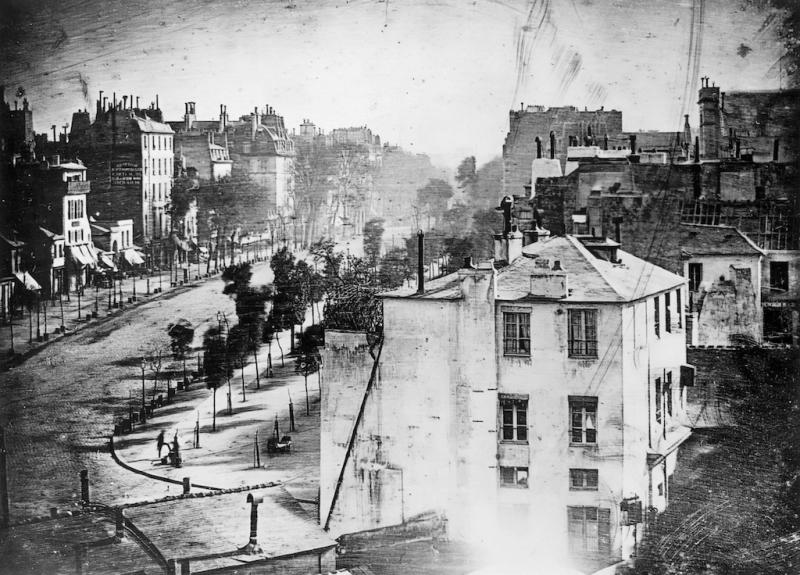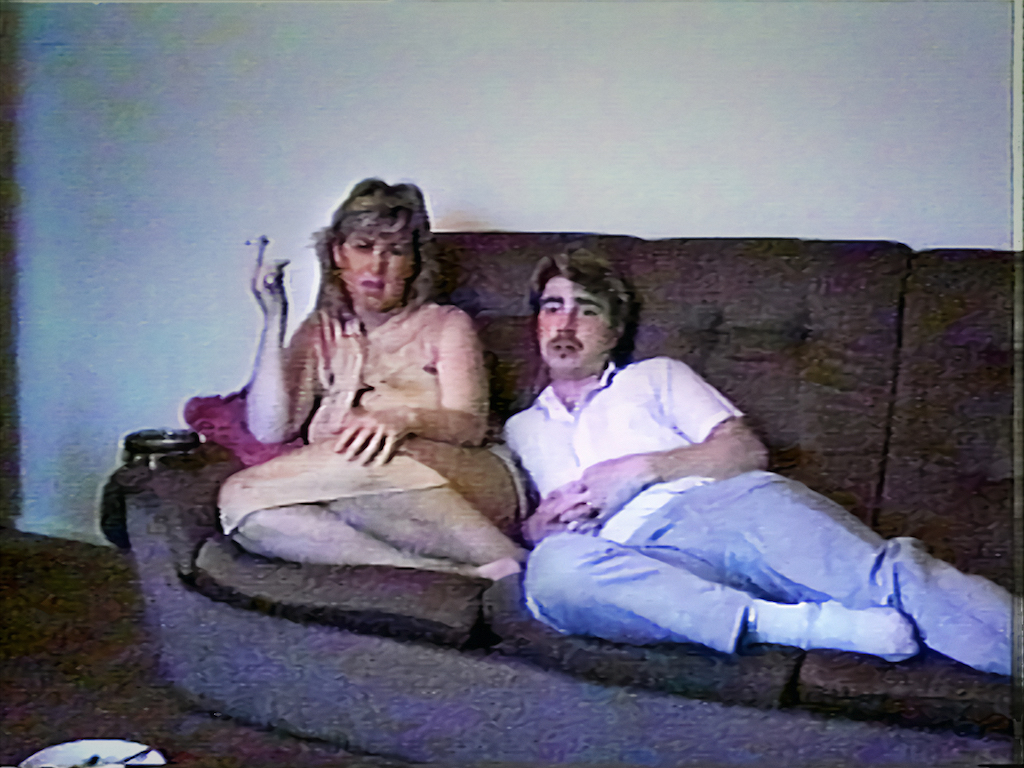Fantastic Machine review - photography's story from one camera to 45 billion | reviews, news & interviews
Fantastic Machine review - photography's story from one camera to 45 billion
Fantastic Machine review - photography's story from one camera to 45 billion
Love it or hate it, the photographic image has ensnared us all

The first photograph was taken nearly 200 years ago in France by Joseph Niépce, and the first picture of a person was taken in Paris by Louis Daguerre in 1838 (main picture).
Some 20 years later, in California, Eadweard Muybridge settled a bet – as to whether a galloping horse maintains contact with the ground – by setting up a string of cameras to record the animal galloping past. When he flicked through the resulting sequence of stills, an illusion of movement was created, and film was born.
Fantastic Machine is a high octane trawl through the social history of the photographic image from those early beginnings until today. It focuses on how we have used photography and film since then and how, in turn, they have shaped us.
In 1858, Elizabeth Eastlake wrote of photography, “its nature is to give evidence of the facts as minutely and impartially as only a machine can do." And to this day, belief in the truth of the photographic image lingers on, despite our awareness of touch-up artists and airbrushing, of darkroom shenanigans, double exposures, and the trickeries of photoshop. Yet directors Axel Danielson and Maximilien van Aertryck fail to mention the ways in which images are routinely manipulated.
They also ignore the pressing issue of Artificial Intelligence. Given that AI is already creating fakes plausible enough to cause serious harm, you’d expect a documentary about the medium to address this dangerous development. And, sadly, the fact that Fantastic Machine steers clear of the subject makes it seem dated before it has even hit the screen.
 The directors, however, do acknowledge falsehoods of other kinds. The title, for instance, comes from a ringing endorsement of the technology made by Edward VII on watching a film of his 1902 coronation – or, rather, a fabricated version of it. Cinematographer Georges Méliès staged the ceremony in a Paris studio using French actors and even included parts of the event that didn’t take place!
The directors, however, do acknowledge falsehoods of other kinds. The title, for instance, comes from a ringing endorsement of the technology made by Edward VII on watching a film of his 1902 coronation – or, rather, a fabricated version of it. Cinematographer Georges Méliès staged the ceremony in a Paris studio using French actors and even included parts of the event that didn’t take place!
Ever since then, world leaders have been quick to exploit the medium’s potential for propaganda. Cue footage of Hitler, Stalin, Putin, Trump and Xi Jinping gazing heroically into the distance (pictured above: ISIS fighters shooting a recruitment video). Most surreal of all is a film of Kim Jong-Un galloping on a white charger through a snow-covered landscape above a caption that reads like a Google translation: “No-one on earth can get in the way of the partisan troop of Kim Jong-Un proceeding with firm conviction.”
The most chilling moments come in an interview with Leni Riefenstahl, the filmmaker commissioned by Hitler to glorify the Nazi project. She glows with pride as she shows one of her favourite clips of a rally involving thousands of banner-wielding soldiers marching in step to a brass band. She describes how she orchestrated the shoot to bring out “the festive quality” of the event. “The editing,” she explains, “lends it a ballet-like quality, a rhythm. It’s cut exactly in time to the music.”
Sidney Bernstein, whose job was to document the liberation of the Bergen-Belsen concentration camp at the end of World War II, explains that the success of propaganda films like Riefenstahl’s made it difficult for the Allies to convince the world of the validity of their footage of skeletal corpses being dragged towards a mass grave.
When Ireland’s national television channel was launched in 1961, President Éamon de Valera admitted in his speech to being afraid of the immense power of TV and radio. “Like atomic energy,” he says, “it can be used for incalculable good, but can also do irreparable harm.”
 Forty years on, psychiatrist Park Dietz warned that media attention encourages copycat crimes and implored American news channels to make their coverage as boring as possible. “Every time we have intense saturation coverage of a mass murder,” he said, “we expect to see one or two more within a week.” Needless to say, his plea fell on deaf ears. Determined to outdo the competition, CNN continued to up the entertainment value of their news programmes. Their coverage of the 2020 presidential election was deliberately sensational. Flashed across the screen, the announcement read: “ELECTION NIGHT IN AMERICA… FROM THE FIRST VOTE TO THE CRITICAL COUNT, THE RACE ENDS HERE”.
Forty years on, psychiatrist Park Dietz warned that media attention encourages copycat crimes and implored American news channels to make their coverage as boring as possible. “Every time we have intense saturation coverage of a mass murder,” he said, “we expect to see one or two more within a week.” Needless to say, his plea fell on deaf ears. Determined to outdo the competition, CNN continued to up the entertainment value of their news programmes. Their coverage of the 2020 presidential election was deliberately sensational. Flashed across the screen, the announcement read: “ELECTION NIGHT IN AMERICA… FROM THE FIRST VOTE TO THE CRITICAL COUNT, THE RACE ENDS HERE”.
Digital technology, which began invading our headspace in the early 2000s, was hailed by Chris Anderson, curator of the TED annual conference, as being “capable of conveying all of us to a smarter, wiser, more beautiful place.” And when the camera travels through the coaches of a commuter train, no-one pays any attention to it because they are all gawping at their smartphones.
A physiologist explains how images that trigger fear, joy, love, lust or anger activate the limbic system in our brains and induce the release of dopamine, creating a sense of reward. Whereas in the 1960s couch potatoes like Daryl Johnstone and his wife (pictured above) would sit in front of the box each night eating a TV dinner, we’ve now created a generation of dopamine junkies. Over 500 hours of footage are published every minute and, between them, thrill-seekers consume a billion hours of content on the Internet each day.
Some even dedicate their entire lives to the net. Take Paul Denino, for instance, who keeps his camera on 24/7 to livestream every minute of his night and day. Meanwhile, Belle Delphine (pictured below) markets herself as a cute little sexpot and keeps her subscribers happy by promising them hardcore porn.

Danielson and van Aertryck have nothing much to say about photography’s 200-year journey from that first black and white still of a back yard somewhere in France to the 500 hours of colourful footage published worldwide every minute of every day. Having done a brilliant job of amassing a wealth of thought-provoking material, they avoid drawing any conclusions from it. After making the somewhat misleading remark that “the camera sees what’s in front of it”, they simply ask where we go from here; which feels like a complete cop out.
The Voyager probe left the earth in 1977 to photograph our neighbouring planets and moons. Before leaving the solar system, it turned its camera towards the earth and photographed our planet as it had never been seen before – as a minuscule little dot floating in a vast expanse of blue. In comparison with the cacophany of noisy self-obsession broadcast every day on the net, the quiet emptiness of interstellar space looks remarkably inviting.
- Fantastic Machine is in cinemas from Friday 19 April
- More film reviews on theartsdesk
rating
Explore topics
Share this article
The future of Arts Journalism
You can stop theartsdesk.com closing!
We urgently need financing to survive. Our fundraising drive has thus far raised £49,000 but we need to reach £100,000 or we will be forced to close. Please contribute here: https://gofund.me/c3f6033d
And if you can forward this information to anyone who might assist, we’d be grateful.

Subscribe to theartsdesk.com
Thank you for continuing to read our work on theartsdesk.com. For unlimited access to every article in its entirety, including our archive of more than 15,000 pieces, we're asking for £5 per month or £40 per year. We feel it's a very good deal, and hope you do too.
To take a subscription now simply click here.
And if you're looking for that extra gift for a friend or family member, why not treat them to a theartsdesk.com gift subscription?

Add comment